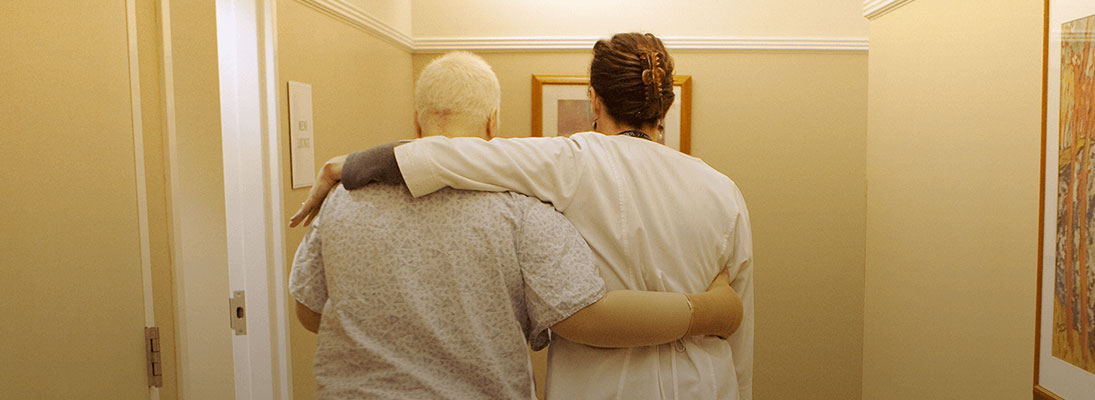
Residencies
Residencies
Community Regional Medical Center
(Family Health Care Network Building, Surabian Dental Center)
Approximate length of rotation: 60 days
Average number of patients seen each day: 6-10
Number of operatories: 6
Residents provide comprehensive dental care to adult and pediatric patients. All residents are responsible for their own patients and will follow them until treatment or the dental general practice is complete. Residents will be exposed to and perform all aspects of general dentistry. Also, various levels of trauma injuries will be treated and followed.
Patients are treated in the Community Regional Medical Center Campus operating room under general anesthesia. Each resident is in the operating room an average of six days throughout the year. Residents will acquire skills including managing and treating special needs patients and young children in the operating room, performing histories and physicals, orders, notes and dictating H&Ps and writing surgical operative reports.
Every Thursday, residents may be assigned to rotations in our skilled nursing facility. While working at Community Subacute & Transitional Care Center, you will manage and treat special needs patients.
VA Central California Health Care System
Approximate length of rotation: 60 days
Average number of patients seen each day: 6-8
Number of operatories: 6
Residents provide comprehensive dental care to adult patients and follow them through treatment or until the dental general practice residency program is complete. Residents will perform comprehensive restorative, crown and bridge, implant restorations, and cad-cam crowns. Implants are placed by oral surgery residents and restored by first- and third-year residents. There is a diverse patient population, including head and neck radiation, diabetic, cardiac and cancer patients.
Internal Medicine
Approximate length of rotation: 4 weeks
Location: Community Regional Medical Center
Dental residents are assigned to a team of medical residents and attendings to provide care to patients admitted to Community Regional Medical Center.
Objectives:
Obtain and interpret the patient's chief complaint, medical, and social history, and review of systems.
Take, record and interpret a complete medical history.
Understand the indications of and interpretation of laboratory studies and other techniques used in diagnosis of oral and systemic diseases.
Obtain and interpret clinical and other diagnostic data from other health care providers.
Use the services of clinical, medical, and pathology laboratories.
Understand the relationship between oral health care and system diseases.
Interpret the physical evaluation performed by the physician with an understanding of how it impacts on proposed treatment.
Perform a history and physical evaluation and collect other data in order to establish a medical assessment.
Participate in the didactic program of the medicine service.
Oral and Maxillofacial Surgery
Approximate length of rotation: 4 weeks
Location: Community Regional Medical Center - OMFS Care Center - North Medical Plaza
Residents work directly with oral and maxillofacial surgery residents in clinic and accompany them on rounds, on-call, as well as in the operating room.
Objectives:
Perform surgical and non-surgical extraction of teeth.
Extract uncomplicated impacted wisdom teeth.
Treat intra-oral hard and soft tissue lesions of traumatic origin.
Treat patients with intra-oral dental emergencies and infections.
Anticipate, prevent, diagnose and provide initial treatment and follow-up management for medical emergencies that may occur during dental treatment.
Anesthesia
Approximate length of rotation: 3 weeks
Location: Community Regional Medical Center
Each resident will participate as part of the anesthesia team in all aspects of patient care. This is a hands-on rotation designed to greatly expand a resident’s knowledge.
Objectives:
Participate in preoperative evaluation including ASA Risk Assessment.
Assess the effects of pharmacological agents.
Perform venipuncture techniques.
Administer intravenous agents.
Monitor the patient.
Manage the airway.
Induce anesthesia and intubate the patient.
Administer anesthetic agents.
Assess and identify levels of anesthesia.
Prevent and treat anesthetic emergencies.
Assess patient recovery from anesthesia.
Dermatology
Approximate length of rotation: 2 half day exposures.
Location: Community Regional Medical Center
Residents work directly with dermatologists evaluating, diagnosing and treating various dermatological conditions and lesions.
Objectives:
Make dental residents aware and knowledgeable in defining various skin lesions during down comprehensive and periodic examinations.
Proper diagnosis will result in less delay of treatment, leading to minimized mortality and morbidity for patients.
We use cookies and other tools to optimize and enhance your experience on our website. View our Privacy Policy.

